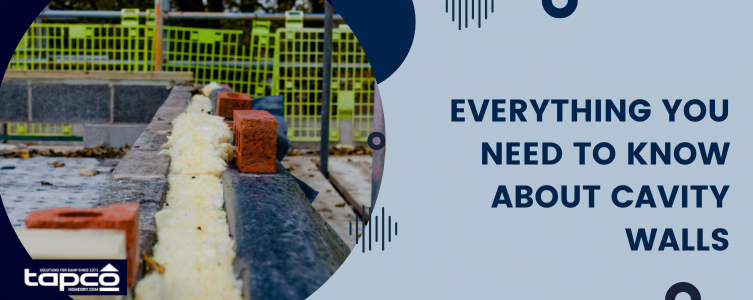
It’s a phrase we often throw around, but the majority of people don’t really know what a cavity wall is or where it can be found. This means that problems with cavity walls often go unchecked because homeowners don’t know what to look out for.
With this in mind, we’ve gathered some of the most common questions we hear about cavity walls and answered them in the simplest way possible. By the end of this article, you should be a little wiser about the role of cavity walls in your home. You’ll also know how to spot some of the most common problems, and what can be done to fix them.
What is a cavity wall?
A cavity wall is made up of two walls with a gap between. This gap helps to create a barrier between the inside and the outside. Prior to the arrival of the cavity wall method, single wall construction was far more common. But this led to issues inside the property, as damp could easily pass from the outside to the inside.
By introducing a cavity wall, there is more insulation, and there is also a barrier between the outside and the inside. As a result, cavity walls make homes warmer and more pleasant to live in.
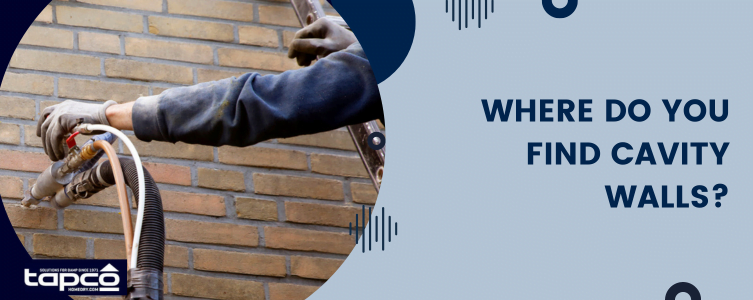
Where do you find cavity walls?
Cavity walls are commonplace in most properties in the UK built after 1982. The cavity wall was first introduced in the 1920s, so some properties from this period have a cavity wall construction. However, it wasn’t until 1982 that this method became widespread.
You can typically check if you have cavity walls by the brick pattern. If your external brick pattern has stretcher bond walls (all bricks laid on their long side) then this indicates that a cavity wall is present.
You can also check if you have a cavity wall by looking at the thickness of the wall. If it is thicker than 11.5 inches, then there is a good chance that you have a cavity wall.
What are cavity walls for?
Cavity walls serve a number of purposes in the construction of a property. The primary purpose is to prevent moisture from outside from penetrating up the outer walls and into the inner rooms.
When constructing a cavity wall, this leaves a gap in the middle which could make it easy to lose heat through your walls. When you consider that a third of heat from a property is lost through the walls, it makes sense that this would be a point of focus for insulating homes.
Cavity walls are commonly filled with insulation which helps to make the home warmer. So while the purpose of the cavity wall is to prevent moisture, it also makes space for insulation, which can help to make a property more comfortable to live in.
Most modern homes have insulation added during construction, but some older properties will have an empty cavity that needs to be filled.
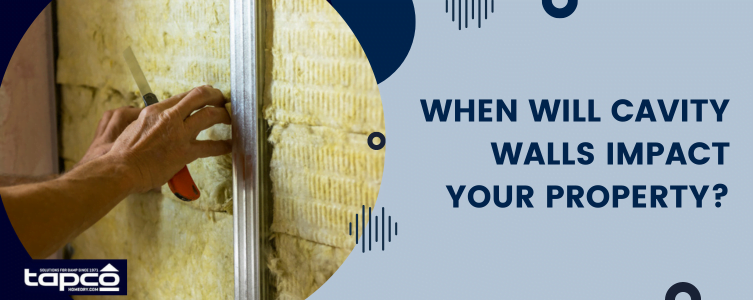
When will cavity walls impact your property?
This is a great question, as we often aren’t aware of our cavity walls until they become problematic. There are a few common issues with cavity walls, including:
- Cavity wall tie failure. Cavity wall ties are metal or plastic rods that are placed between the two walls to tie them together and allow the two walls to function as one. These can break down over time, leading to cracks in your walls. If left untreated, cavity wall tie failure can lead to a complete collapse of the outer wall. Common signs of cavity wall tie failure include vertical cracks and bowing walls.
- Rising damp. Many cavity walls are also treated with a damp proof course to help stop rising damp. This is a chemical injection into the brickwork that creates a barrier between the inside and the outside to provide even more protection against damp. If this fails over time or was not installed correctly, it can lead to damp in the property.
- Poor insulation. If your property is of an older construction, you might have an empty cavity wall. This will need to be addressed as it means that you will be losing heat through your walls. This can make it very expensive to heat your property, which is a key concern at the moment as the cost of living is on the rise.
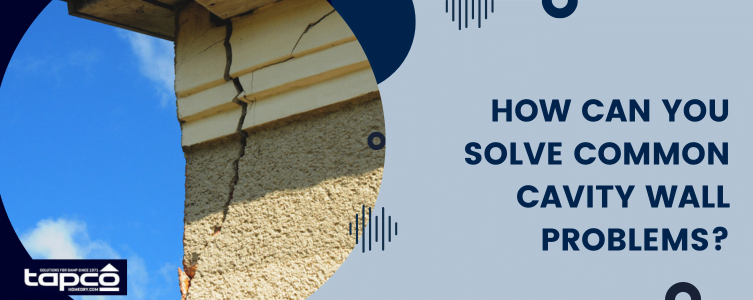
How can you solve common cavity wall problems?
The first step to solving a problem with your cavity walls is knowing how to spot a problem in the first place. It’s a good idea to regularly inspect the exterior of your property and look out for signs of cracks or bowing in the walls.
Inside your property, you should regularly move large pieces of furniture to check for signs of damp that might be concealed. You should also keep a close eye on your energy bills. If you feel like your bills are rising and you haven’t changed your behaviour, this could be a sign that you have damp in your home.
If your home always feels cold and you struggle to keep it warm, this might be a sign that you don’t have the correct insulation. If your walls feel cold to the touch in winter and you live in an older property, it might be worth checking what insulation you have.
If you’re concerned about any problem with your cavity walls, the best option is to call in the experts. Issues with your cavity walls can become more problematic the longer you leave them. To avoid any catastrophic issues with your walls, arrange a home survey to determine the issue with your cavity walls.
Tapco Homedry are the experts in cavity walls, damp proofing and insulation. If you suspect you might have a problem, our friendly team can help you to get to the bottom of it. Once we’ve diagnosed the problem, we’ll then create a plan of action to help get you back on track.


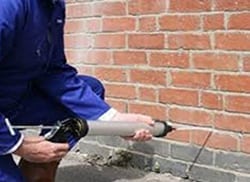 Damp Proofing
Damp Proofing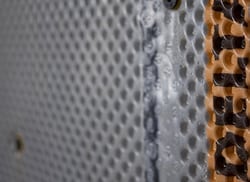 Basement Damp Proofing
Basement Damp Proofing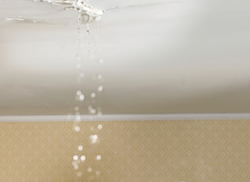 Water Damage
Water Damage Condensation Control
Condensation Control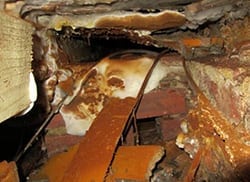 Dry Rot Treatment
Dry Rot Treatment WOODWORM & WET ROT
WOODWORM & WET ROT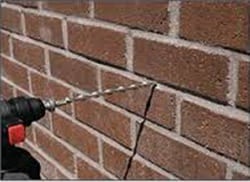 CAVITY Wall Ties
CAVITY Wall Ties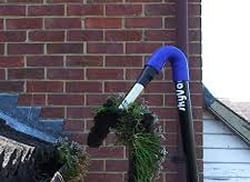 Property Maintenance
Property Maintenance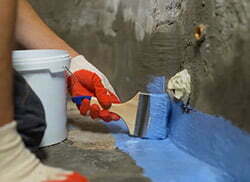 Waterproofing And Tanking
Waterproofing And Tanking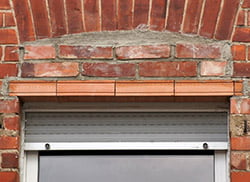 Structural Repairs
Structural Repairs







